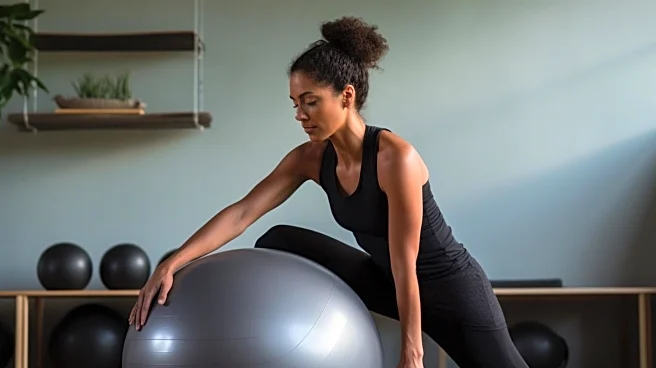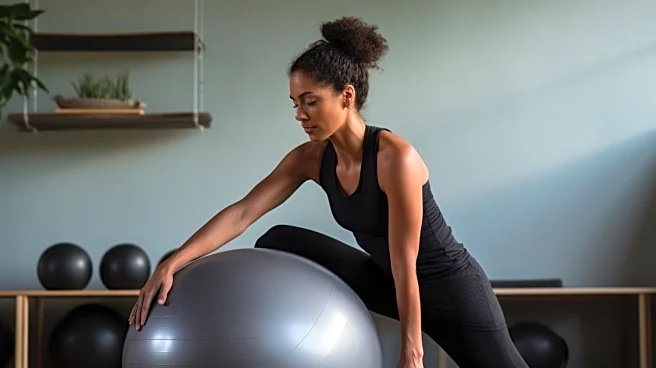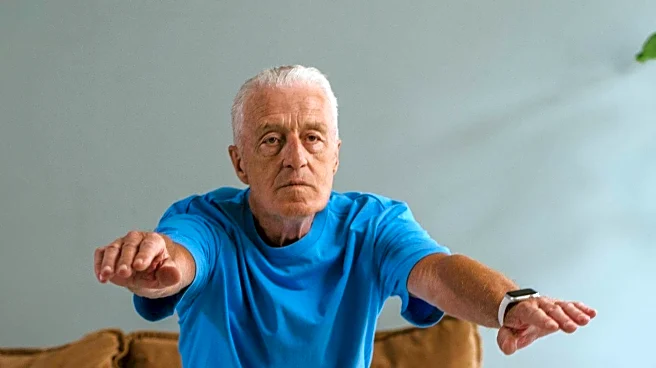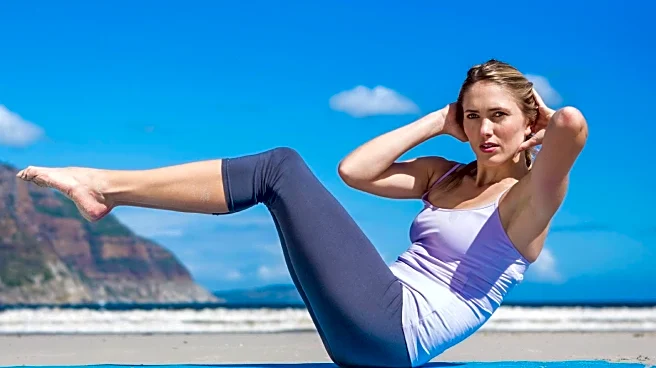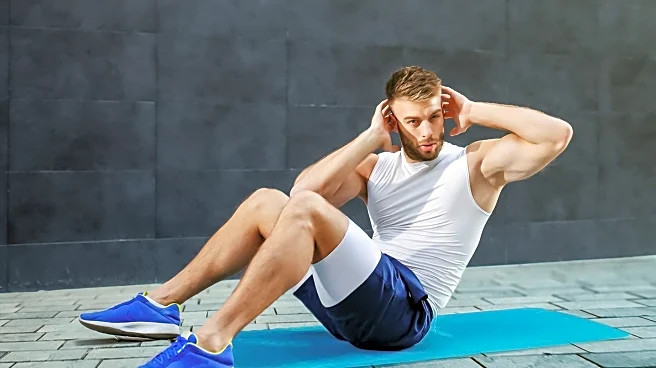What's Happening?
Dr. Alexis Colvin, a board-certified orthopedic surgeon and chief medical officer for the 2025 U.S. Open, emphasizes the importance of weight-bearing exercises for women entering perimenopause. As estrogen levels decrease during this phase, bone density can be significantly affected, increasing the risk of injury and falls. Colvin recommends activities such as walking, dancing, jogging, tennis, or pickleball, which utilize body weight to stimulate bone maintenance. She stresses the importance of consistency in exercise routines, advising women to start small and gradually build up their activity levels. Colvin suggests incorporating exercises that strengthen the core and upper body, such as planks, sit-ups, and resistance exercises using free weights or bands.
Why It's Important?
The decline in estrogen during perimenopause can lead to reduced bone density, posing a risk for fractures and other injuries. By engaging in weight-bearing exercises, women can help maintain their bone mass and improve overall strength and fitness. This proactive approach is crucial for enhancing longevity and quality of life as women age. The emphasis on consistency and gradual progression in exercise routines can empower women to take control of their health, potentially reducing healthcare costs associated with bone-related injuries. Additionally, these exercises can improve balance and stability, further minimizing the risk of falls.
What's Next?
Women entering perimenopause are encouraged to integrate weight-bearing exercises into their daily routines. Healthcare providers may increasingly advocate for such exercises as part of preventive health strategies for aging populations. Fitness centers and trainers might see a rise in demand for programs tailored to perimenopausal and menopausal women, focusing on bone health and overall fitness. As awareness grows, more women may seek guidance from professionals to ensure safe and effective exercise practices.
Beyond the Headlines
The focus on weight-bearing exercises highlights a broader shift towards preventive health measures in aging populations. This approach not only addresses physical health but also contributes to mental well-being by promoting active lifestyles. The cultural acceptance of aging and fitness may evolve, encouraging more women to embrace exercise as a lifelong habit. Additionally, this trend could influence public health policies, prioritizing exercise programs for older adults to reduce healthcare burdens associated with age-related conditions.



